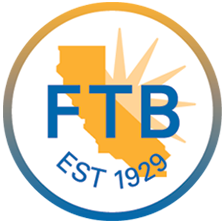
Social Security tax plays a crucial role in funding retirement, disability, and survivor benefits for millions of Americans. However, with ongoing economic changes and demographic shifts, the question arises: how high will Social Security tax go? This article delves into current tax rates for employees and self-employed individuals, as well as projections for future ceilings.
Current Social Security Tax Rates
For Employees.</> Employees currently pay a Social Security tax rate of 6.2% on their wages up to the annual taxable maximum. For 2024, this maximum is set at $147,000. This means that any income above this threshold is not subject to Social Security tax. Additionally, employees pay a 1.45% Medicare tax on all earnings, with no income cap.
For Self-Employed Individuals. Self-employed individuals are responsible for both the employee and employer portions of the Social Security tax, totaling 12.4% of their net earnings, up to the same taxable maximum of $147,000. They also pay the full 2.9% Medicare tax. While this may seem like a higher burden, self-employed individuals can deduct the employer-equivalent portion of the tax when calculating their adjusted gross income.
Projections for Future Ceilings
The Social Security Administration (SSA) adjusts the taxable maximum each year based on changes in national average wages. Historically, these adjustments have led to steady increases in the taxable maximum. For instance, the taxable maximum increased from $106,800 in 2010 to $147,000 in 2024. This trend suggests that the ceiling will continue to rise annually, potentially exceeding $200,000 within the next decade if wage growth persists at its current pace.
Several factors influence these projections:
- Economic Growth: Strong economic growth can lead to higher wages, pushing up the taxable maximum.
- Inflation: Higher inflation rates can also increase the wage base, resulting in higher Social Security tax ceilings.
- Legislative Changes: Congress may enact reforms to address the long-term solvency of the Social Security program, potentially leading to more significant increases in the taxable maximum.
Social Security Tax Rate Impact on Employees and Self-Employed Individuals
As the taxable maximum increases, higher earners will contribute more to Social Security. This can affect both employees and self-employed individuals in several ways:
- Higher Contributions: Employees and self-employed individuals with earnings above the current ceiling will see their Social Security tax contributions increase.
- Increased Benefits: Higher contributions could potentially result in higher Social Security benefits upon retirement, although this depends on future legislative changes.
- Financial Planning: Both employees and self-employed individuals will need to consider these changes in their financial planning, particularly regarding retirement savings and tax strategies.
Conclusion
The trajectory of Social Security tax rates and taxable maximums is influenced by various economic and legislative factors. While current rates for employees and self-employed individuals are set at 6.2% and 12.4%, respectively, up to the annual ceiling, this ceiling is expected to rise steadily in the coming years. Staying informed about these changes is essential for effective financial planning and ensuring adequate retirement preparedness.
Understanding the potential future increases in Social Security tax ceilings allows individuals to better prepare for their financial future, whether they are employees or self-employed.
You may also enjoy reading: Income Tax Tips for Estate Planning







